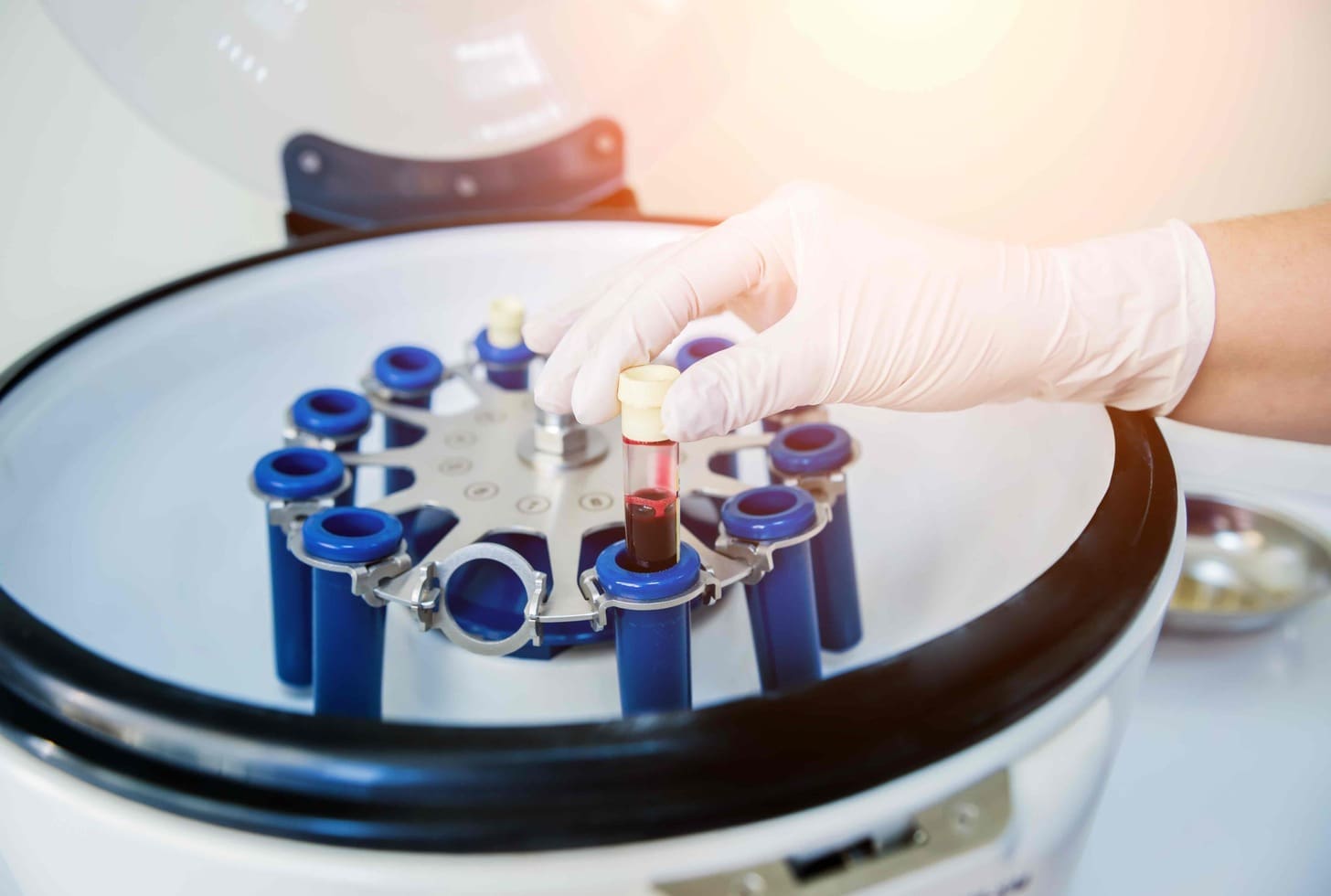Last Updated on November 26, 2025 by Bilal Hasdemir

If you’re looking for long-term relief from back pain, understanding the radiofrequency ablation back pain success rate is key. Research shows that this treatment is effective for about 60–80 percent of patients, offering lasting relief for those dealing with chronic pain.
At Liv Hospital, we focus on science-backed care and excellent patient outcomes. Every treatment — including radiofrequency ablation for lower back pain — is guided by the latest research and tailored to each patient’s needs.
Key Takeaways
- Radiofrequency ablation has a 60-80% success rate for treating chronic back pain.
- Liv Hospital prioritizes evidence-based care for optimal patient outcomes.
- The treatment is guided by the latest research and patient-centered philosophy.
- Patients can expect significant relief from chronic pain.
- Ablation for lower back pain is a specialized treatment.
- Success rates are based on real-world data and studies.
The Science Behind Radiofrequency Ablation for Back Pain

Radiofrequency ablation is getting more attention for treating back pain. It’s seen as effective and safe. This method is helping those who haven’t found relief with other treatments.
What is Radiofrequency Ablation?
Radiofrequency ablation (RFA) uses cooled probes to send heat to nerves. This neurolysis stops pain signals. It helps many patients feel less pain.
How RFA Targets Nerve Pain Signals
RFA makes a lesion on the nerve to block pain signals. A special needle electrode is guided to the nerve. It then sends out radiofrequency energy, heating the area and creating the lesion.
Types of Back Pain Suitable for RFA
Radiofrequency ablation is great for facet and sacroiliac joint pain. It’s for those with chronic lower back pain who haven’t found relief with other treatments. It’s also for those who got temporary relief from nerve blocks.
Key Finding #1: Overall Radiofrequency Ablation Back Pain Success Rate

Clinical trials and studies have shown Radiofrequency Ablation’s effectiveness in managing back pain. It has become a promising treatment for those with chronic back pain.
60-80% Success Rate Across All Patients
Research shows Radiofrequency Ablation has a success rate of 60-80% for back pain treatment. This success rate comes from studies with different patient groups and methods.
RFA’s success lies in its precise targeting of pain signals. Ablating the nerves that carry pain can greatly reduce or stop pain for many patients.
Factors That Influence Treatment Outcomes
Several factors can affect the success of Radiofrequency Ablation. These include:
- Patient selection criteria
- The specific condition being treated (e.g., facet joint pain, sacroiliac joint pain)
- The skill and experience of the practitioner performing the procedure
- The use of diagnostic blocks before RFA to confirm the pain source
Comparing RFA Success to Alternative Treatments
It’s important to compare Radiofrequency Ablation with other back pain treatments. Here’s a comparison:
| Treatment | Success Rate | Duration of Relief |
| Radiofrequency Ablation | 60-80% | 6-12 months |
| Corticosteroid Injections | 40-60% | Variable, often shorter |
| Physical Therapy | 50-70% | A variable often requires ongoing treatment |
The table shows Radiofrequency Ablation’s competitive success rate and relief duration. It makes it a valuable option for chronic back pain patients.
Key Finding #2: Lumbar Radiofrequency Ablation Success Rate Data
Lumbar radiofrequency ablation is a promising treatment for lower back pain. It uses heat from radiofrequency waves to stop pain signals to the brain.
70-85% Success Rate for Facet Joint Pain
Research shows lumbar RFA is very effective for facet joint pain. It has a success rate of 70% to 85%. This means most patients see a big drop in pain.
Key benefits of lumbar RFA for facet joint pain include:
- Significant pain reduction
- Minimally invasive procedure
- Quick recovery time
Effectiveness for Different Lumbar Conditions
Lumbar RFA helps with more than just facet joint pain. It also works for sacroiliac joint dysfunction and lumbar discogenic pain. This makes it a versatile treatment for various lower back issues.
The success of lumbar RFA for different conditions is as follows:
| Condition | Success Rate |
| Facet Joint Pain | 70-85% |
| Sacroiliac Joint Dysfunction | 50-70% |
| Lumbar Discogenic Pain | 40-60% |
Diagnostic Blocks and Outcome Prediction
Diagnostic blocks are key in predicting RFA success. They temporarily numb the pain-causing nerves. This helps doctors know if RFA will work for a patient.
Diagnostic blocks help find the right candidates for RFA. If a patient feels a lot of relief from a diagnostic block, they’re more likely to benefit from RFA.
Key Finding #3: Duration of Relief After Back Ablation
Knowing how long pain relief lasts after Radiofrequency Ablation (RFA) is key for those with chronic back pain. The time relief lasts can greatly affect a person’s quality. It also helps in deciding on future treatments.
Average Relief Period
Pain relief after RFA for back pain usually lasts 6 to 12 months. This time can change based on several things. These include the condition being treated, the RFA technique, and the patient’s health.
Factors Influencing Relief Duration
Many things can affect how long pain relief lasts after RFA. These include:
- The underlying condition causing pain (e.g., facet joint syndrome, sacroiliac joint dysfunction)
- The accuracy of the initial diagnosis and the precision of the RFA procedure
- Patient factors such as age, overall health, and presence of comorbidities
- The occurrence of nerve regeneration over time
Knowing these factors helps doctors predict outcomes better. It also helps them advise patients on what to expect.
Patient Experiences with Long-term Outcomes
Patient experiences with RFA vary a lot. Some may feel relief for 6-12 months, while others may feel it longer or shorter. The table below shows some findings from patient studies:
| Study | Number of Patients | Average Relief Duration | Success Rate |
| Study A | 100 | 9 months | 75% |
| Study B | 50 | 12 months | 80% |
| Study C | 200 | 6 months | 60% |
These studies show how different patient outcomes can be. They highlight the need for treatment plans tailored to each person.
In summary, while most people experience relief for 6-12 months after RFA, results can vary. Factors like the condition, procedure accuracy, and patient health all play a role in how long relief lasts.
Key Finding #4: Spinal Ablation Success Rate in Various Demographics
The success rate of spinal ablation for back pain changes a lot depending on who you are. Doctors need to know this to choose the best treatment.
Age and Gender Considerations
Age and gender can affect how well spinal ablation works. Older people often do better with RFA because it helps with their degenerative conditions.
Research shows that women might have a bit higher success rate than men. But the difference isn’t always clear. It could be because of how pain is perceived or hormonal effects.
Impact of Previous Spine Surgeries
People who have had spine surgeries before face a special challenge. The success rate can depend on the surgery type and scar tissue.
A study showed that those with past surgeries might have a slightly lower success rate. But it’s not a big difference. This means spinal ablation can work for people who have had surgery before.
Comorbidities and Their Effect on Outcomes
Having other health issues can really affect how well spinal ablation works. Problems like diabetes, obesity, and autoimmune disorders can slow healing and change the outcome.
| Comorbidity | Effect on Spinal Ablation Success Rate |
| Diabetes | Reduced success rate due to possible nerve damage |
| Obesity | Lower success rate, possibly due to increased inflammation |
| Autoimmune Disorders | Variable impact depending on the specific condition and treatment |
Key Finding #5: Quality of Life Improvements with Ablation for Lower Back Pain
Radiofrequency ablation (RFA) has made a big difference in how people with chronic lower back pain live. It’s not just about easing pain. It also makes life better in many ways.
Functional Capacity Enhancements
RFA helps people move better and do more things. It makes it easier to do daily tasks. Before, pain made these tasks hard or impossible.
Reduction in Pain Medication Requirements
RFA also means less need for pain meds. This is good for health. It’s better than taking opioids for a long time.
A study showed that patients need less pain medicine after RFA. This makes life better and lowers the chance of side effects from meds.
Return to Normal Activities and Work
RFA helps people go back to their normal lives and work. It makes them feel better and helps them earn money again. This is good for their health and wallet.
| Outcome Measure | Pre-RFA | Post-RFA |
| Pain Level | Severe | Mild/Moderate |
| Functional Capacity | Limited | Improved |
| Pain Medication Use | High | Reduced |
| Work Status | Unable to Work | Returned to Work |
The table shows how RFA improves life. It helps with pain, moving, meds, and work. These changes show RFA is a good choice for lower back pain.
Key Finding #6: Success Rates for Repeat Ablation Procedures
Research on repeated RFA treatments shows promising results. It offers hope for those with chronic back pain. Understanding how well these treatments work over time is key.
75% Effectiveness in Subsequent Treatments
Studies show that repeat RFA treatments are very effective. About 75% of patients find relief in subsequent treatments. This means many patients get significant pain relief after multiple procedures.
A key factor in this success is the precise targeting of nerve pain signals. This is what RFA therapy is all about. A study in the Journal of Pain Research found that repeat RFA is very valuable for chronic pain patients who haven’t found relief elsewhere.
Mean Relief Duration of 8 Months
Pain relief from repeat RFA treatments lasts about 8 months on average. But this can change based on the patient. Some may feel relief longer or shorter, showing the need for treatments tailored to each person.
Optimal Timing Between Procedures
Finding the best time to repeat RFA treatments is important. While it varies, research suggests a certain window can keep treatments effective.
- Factors influencing the timing include the patient’s response to the initial treatment.
- The underlying cause of the pain
- The presence of any comorbid conditions
Healthcare providers can create better treatment plans by considering these factors. This helps make repeat RFA procedures more effective.
Key Finding #7: Patient Selection Factors for Optimal Results
Choosing the right patients is essential for the best results with ablation for lower back pain. The success of Radiofrequency Ablation (RFA) for back pain depends on finding the right candidates for treatment.
Ideal Candidates for Nerve Ablation Back Pain Treatment
People with specific back pain, like facet joint pain, are best suited for RFA. They usually have chronic pain that hasn’t gotten better with usual treatments like physical therapy or medicine.
Diagnostic blocks help figure out if the facet joints are causing the pain. If a patient feels a lot better after these blocks, they might get good results from RFA.
Predictive Factors for Positive Outcomes
Several things can tell if a patient will do well with nerve ablation back pain treatment. These include:
- A clear diagnosis of facet joint pain or other conditions known to respond well to RFA
- Successful response to diagnostic blocks
- Absence of significant psychological or psychiatric comorbidities
- Realistic patient expectations regarding the benefits and limits of RFA
When to Consider Alternative Treatments
RFA is not for everyone. Patients with diffuse or multi-site pain, big psychological issues, or who didn’t get better from diagnostic blocks might need other treatments.
Other options could be other interventional procedures, advanced physical therapy, or a team approach to pain management.
Conclusion: Making an Informed Decision About RFA for Back Pain
Radiofrequency ablation (RFA) is a treatment for back pain that works well for some people. It’s good for those who haven’t found relief with other treatments. The success rate of radiofrequency ablation for back pain is promising, with many patients feeling better.
The success of RFA for lower back pain depends on a few things. These include who gets the treatment, why they have pain, and how the treatment is done. Some people don’t get enough relief, but others see a big drop in pain and feel better overall.
Knowing how well RFA works can help you decide if it’s right for you. It’s important to talk to a doctor to see if RFA is a good choice for your back pain.
FAQ
What is the overall success rate of Radiofrequency Ablation for back pain?
Radiofrequency Ablation (RFA) for back pain has a success rate of 60-80%. This means a lot of people see a big drop in their pain after the procedure.
How does RFA target nerve pain signals?
RFA uses radiofrequency waves to heat nerves. This heat “turns off” the nerves that send pain signals to the brain. This helps reduce or stop the pain.
What types of back pain are suitable for RFA?
RFA works well for facet joint pain, sacroiliac joint pain, and other chronic back pain. It’s great for conditions like lumbar facet syndrome.
What is the success rate of lumbar RFA for facet joint pain?
Lumbar RFA for facet joint pain has a success rate of 70-85%. Many patients find it very effective, feeling a lot of pain relief.
How long does pain relief last after RFA?
Pain relief from RFA can last 6-12 months on average. Some people might feel relief for longer, while others might need another treatment.
Are there factors that influence the success of RFA?
Yes, many things can affect how well RFA works. These include the condition being treated, how accurate the diagnosis is, and the skill of the doctor. Patient factors like age and health also play a role.
Can RFA be repeated if pain returns?
Yes, RFA can be done again if pain comes back. Studies show that follow-up treatments can work well. But how long relief lasts can vary, and when to do it again depends on each case.
How does RFA impact quality of life?
RFA can greatly improve life by reducing pain and helping people move better. It also means less need for pain meds and lets people do more activities. This boosts overall happiness and well-being.
Are there any demographic factors that affect RFA success?
Yes, things like age, gender, and past spine surgeries can affect how well RFA works. Some studies suggest certain groups might respond better or worse to the treatment.
What are the predictive factors for positive outcomes with RFA?
For good results with RFA, accurate diagnosis and choosing the right patients are key. Certain clinical signs, like a good response to diagnostic blocks, help pick the best candidates.
When should alternative treatments be considered?
Look at other treatments if RFA isn’t right or doesn’t work. Or if other options fit better with the patient’s condition, medical history, or what they prefer.
References
- Conger, A., Burnham, T. R., Clark, T., Teramoto, M., & McCormick, Z. L. (2022). The effectiveness of intraosseous basivertebral nerve radiofrequency ablation for the treatment of vertebrogenic low back pain: An updated systematic review with single-arm meta-analysis. Pain and Therapy, 11(2), 693–707. https://pmc.ncbi.nlm.nih.gov/articles/PMC9297160/






